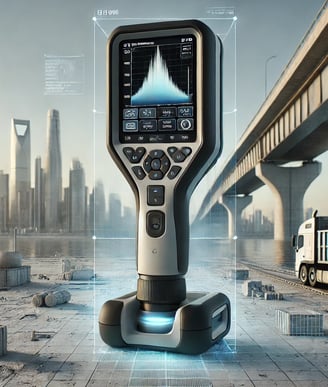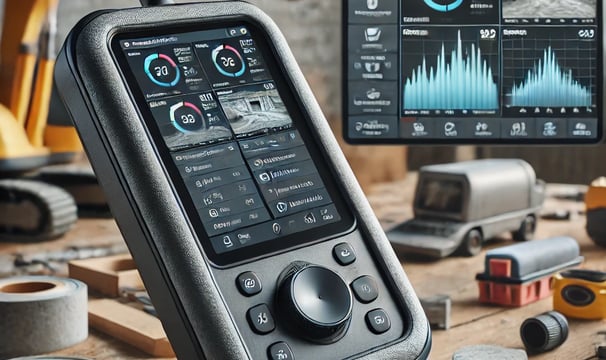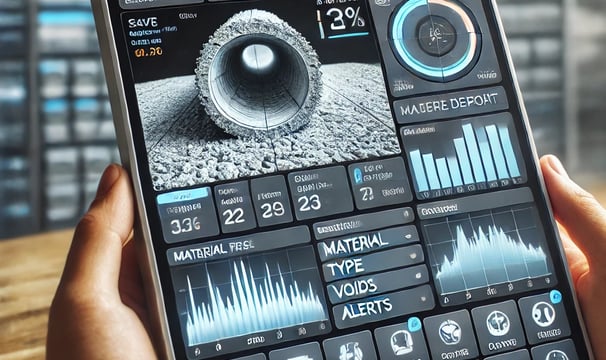Building Inspection with
a portable, real-time ultrasound sensor designed to ensure building safety by quickly detecting structural flaws in materials like concrete, steel, and wood.


Revolutionize
coreguard
Ultrasonic Sensor • Real-time Feedback • User-friendly
CoreGuard
a portable, real-time ultrasound sensor designed to ensure building safety by quickly detecting structural flaws in materials like concrete, steel, and wood.


Description
Coreguard revolutionizes building inspections by combining advanced ultrasonic sensing with portability and real-time analytics. Unlike traditional inspection methods that can be time-consuming and invasive, Coreguard offers a non-destructive, efficient solution that delivers precise results instantly, empowering inspectors and engineers to make informed decisions on-site.
Coreguard is designed to be user-friendly and versatile, allowing inspectors, engineers, and technicians to quickly assess the structural integrity of various materials. Below is an outline of its use process


Impacts
Enhanced Safety: Identifies structural flaws early, preventing accidents and ensuring the safety of buildings and infrastructure.
Cost Reduction: Minimizes costly repairs by detecting issues before they escalate.
Compliance Assurance: Helps buildings meet safety standards and regulations through accurate and reliable diagnostics.
Efficiency: Streamlines inspections, reducing the time and labor needed for comprehensive structural assessments.
Sustainability: Contributes to resource conservation by accurately targeting repairs and reducing unnecessary material use.
Key features
Real-Time Diagnostics
Provides instant feedback on structural flaws such as cracks, voids, and internal deterioration
Employs high-frequency sound waves to inspect the internal integrity of structural materials.
Designed for ease of use, with an intuitive display for analyzing results on-site.
Ultrasonic Technology
User-Friendly
Steps for Usage


Preparation
Power on the device and calibrate it according to the material being inspected (e.g., concrete, steel, wood).
Attach the appropriate sensor head, if interchangeable, based on the material and inspection type


Inspection Setup
Position the Coreguard device on the surface of the material to be tested.
Ensure the contact area is clean and free of debris for accurate ultrasonic transmission.


Scanning
Activate the device to emit high-frequency ultrasonic waves into the material.
Move the device across the surface to scan for structural inconsistencies such as cracks, voids, or deterioration.
Real-Time Feedback
View diagnostics on the device's screen, which displays data such as the depth of cracks, internal voids, or density inconsistencies.
Use visual graphs or numerical outputs to interpret the structural integrity of the material.
Data Storage and Reporting
Save the inspection data for later analysis or compliance documentation.
Transfer the results to a connected device or cloud system if supported, for easy sharing with stakeholders.
Based on the diagnostics, decide on necessary actions, such as repairs, further testing, or declaring the structure safe.
Decision Making
Meet team Planotion
Meet the team behind this wonderful innovation
Moyinoluwa Adetunji






Aanuoludire Awolalu
Abdulraheem Shonibare
Tobiloba Adegoke






